Home (theory of the ego death and rebirth experience)
Entheogen Picture Finds
Found by Michael Hoffman.
See also: Dried Amanita Photos
Contents:
Virgin Mary wearing an Amanita-cap cap
Last Supper around an Amanita-cap table
Mary Magdalene giving Judas the sacrament at the Last Supper
Mark/lion halo with white dots on red edge
Virgin Mary wearing an Amanita-cap cap
Announced December 25, 2003
From Economist magazine, Dec 20 2003-Jan 2 2004, p. 29. This icon painting shows the mother of God (Queen of Heaven) holding the Christ child. Her headdress is an Amanita cap cap.
This is the cover of the issue:
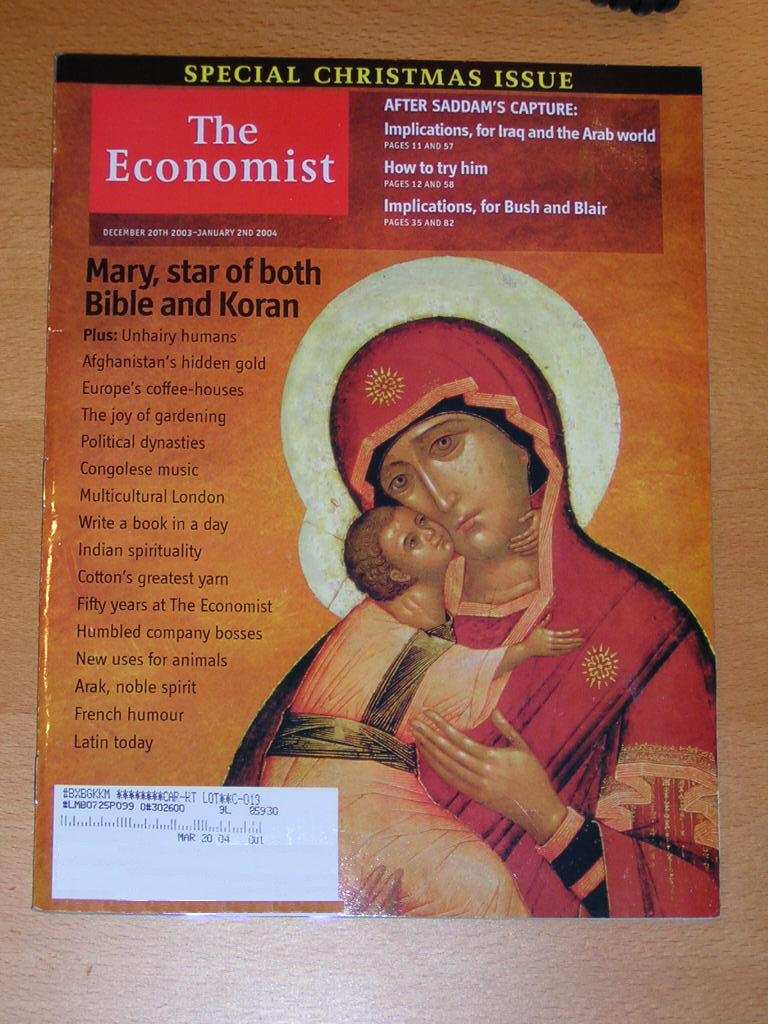
On page 29 this icon appears:
From digital camera:
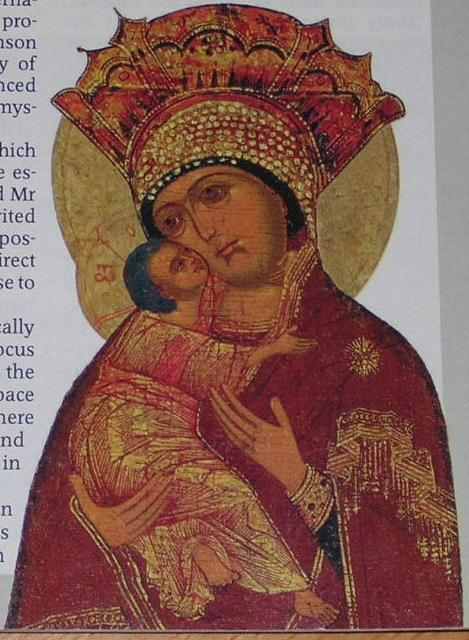
From scanner:
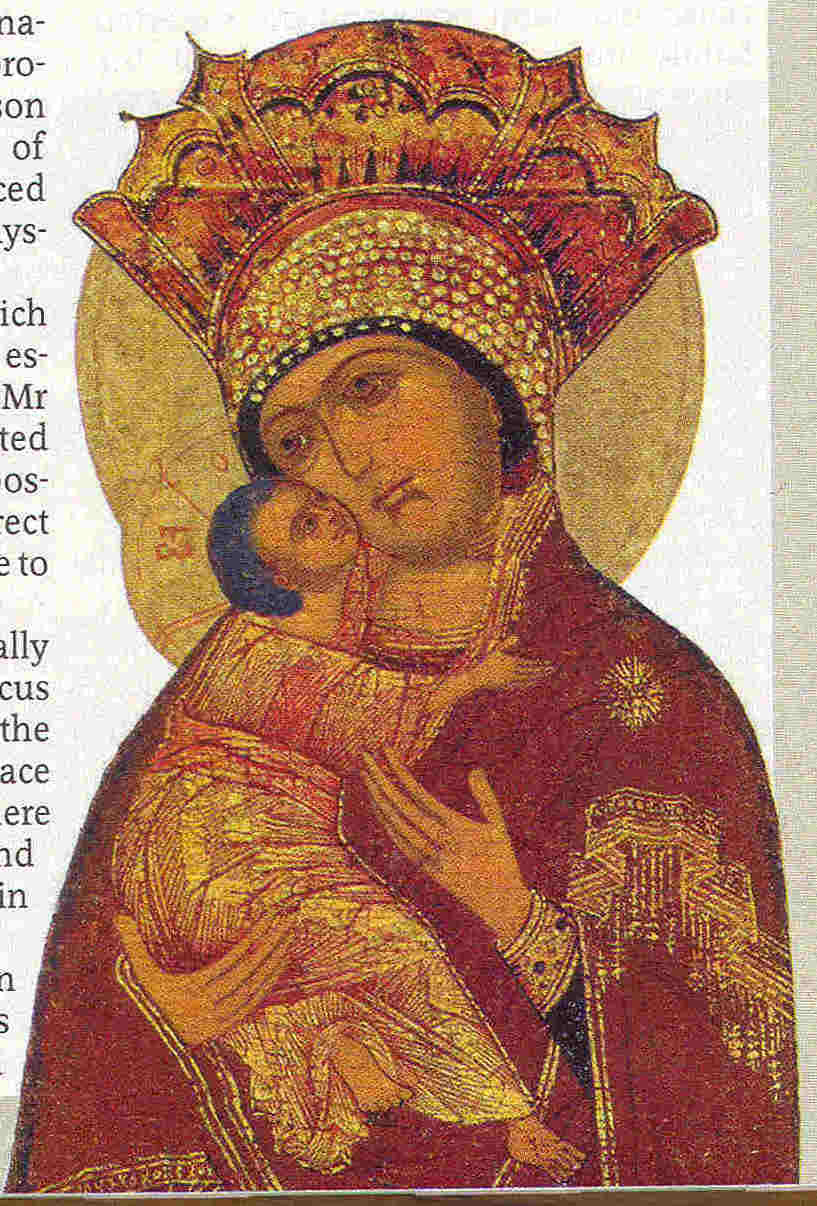
A close-up of Mary's cap reveals it to be a literal Amanita cap:
From digital camera:
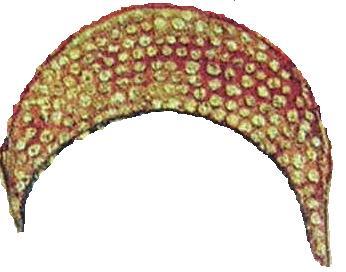
From scanner:
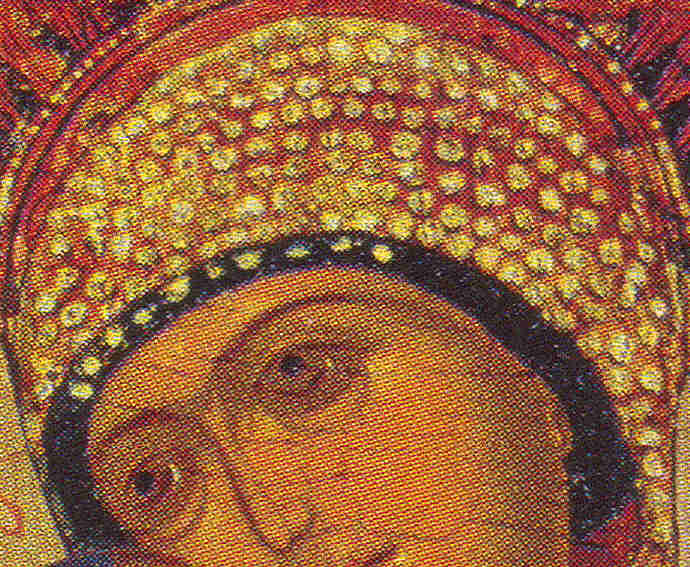
For comparison, below is a portion of a photo of a dried orange-gold (rather than red) species of Amanita, similar shape though from a different angle. In the icon, a fresh Amanita is represented, so the dots (veil remnants) are raised more.
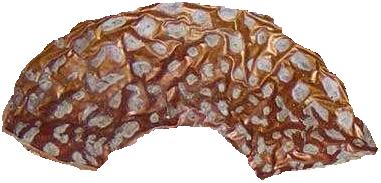
Last Supper around an Amanita-cap table
Announced November 10, 2001
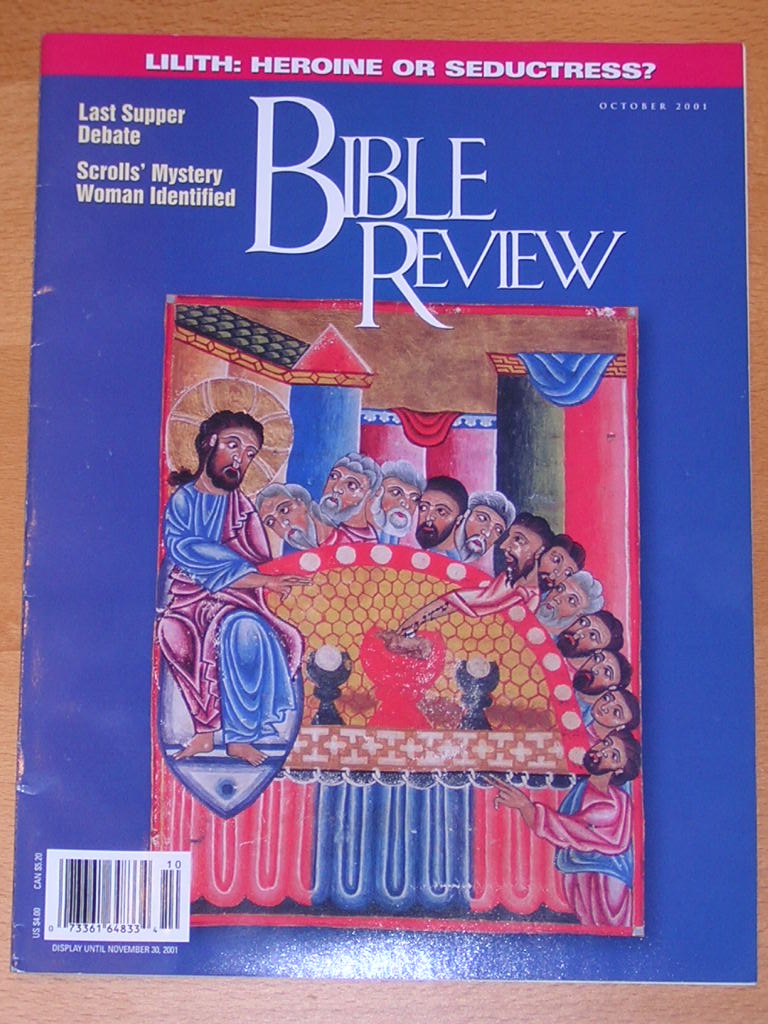
From digital camera:
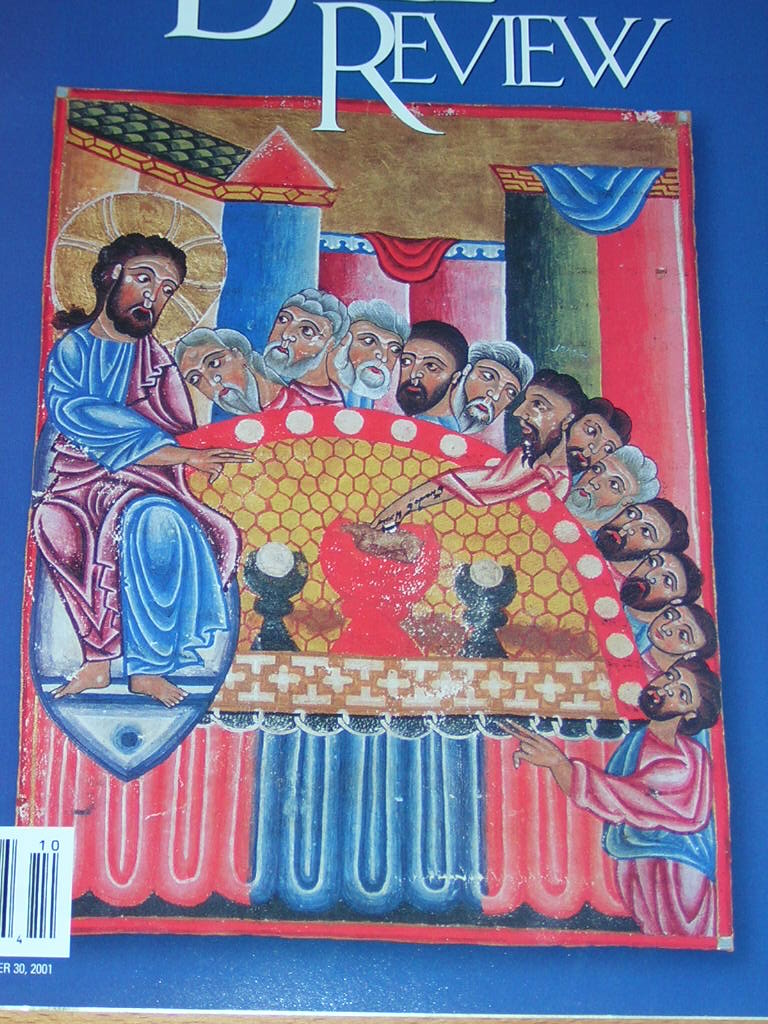
From scanner:
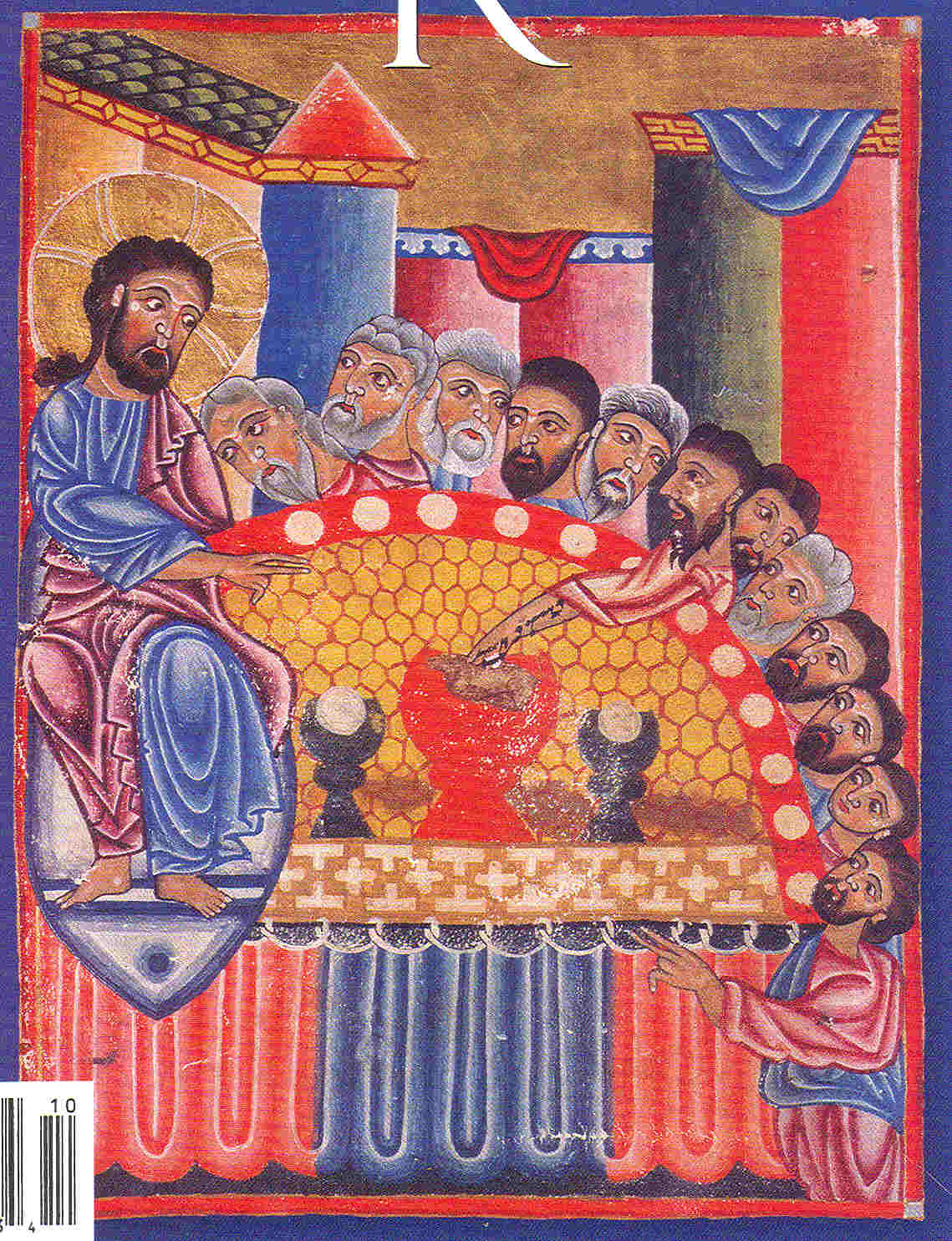
For comparison, here is a similar icon with a mushroom-cap shaped table, but one without any clear entheogenic allusions, though it does look like the common orange-brown color of Amanita cap with off-white spots:
![]()
Bible Review current issue, October 2001. Focus: Last Supper.
http://www.biblereview.org/bro01/brcover.html
When looking at the magazine cover at the newsstand, though Clark Heinrich has taught me to actively look for Amanita in iconography (http://www.promind.com/bk_stf.htm, http://www.entheomedia.org), I thought that this Eucharist scene on the cover was noteworthy because each disciple had a loaf/ plain tan cap at his place setting. Fortunately I bought the issue, and was embarrassed to plainly and immediately see that the tan loaves are off-white veil-remnant spots on the wrapped-around red edge of the table.
The table surface is golden honeycomb, a simile for honey-smelling, golden Amanita -- to the taste and smell, this honeycomb is a literal representation; to the eyes, you must mentally replace the honeycomb lines by straight lines to form the usual Amanita-underside sun-halo.
I was able to recognize this pattern because I've been looking for not only Amanita-underside rays in Christian halos, but also for a rim, often red, with dots, representing the underturned top of the cap.
Other mushroom shape elements: the blue awning forms a thick stipe. Since the iconographically stylized table top has "poor" perspective, it is a semicircle which, combined with the blue awning, forms a perfect mushroom shape. The "poorly" drawn red container in the middle of the table forms the Holy Grail shape of the mature upturned Amanita (Heinrich, _Strange Fruit_ page 85 plate 35; Heinrich plate 5 page 54, Issue 1, Entheos journal).
In the Passover Seder meal, the significance of the food served during the Seder must be explained during the meal.
[see correction of this paragraph below] After Dan Merkur's book _Mystery of Manna_, this would mean explaining the story of Moses poisoning the leavening in Egypt with a toxic strain of ergot (the "yeast of malice"), and forbidding the Jews to use the leavening, to walk away with booty and redemption from slavery while the Egyptians were incapacitated with ergot poisoning.
Correction: The ergot Exodus hypothesis was described in detail and published by Clark Heinrich. Dan Merkur's book _The Mystery of Manna: The Psychedelic Sacrament of the Bible_, 2000, is packed with excellent ideas about entheogens (specifically, ergot) and the Bible, but I don't see the ergot Exodus hypothesis there.
_Strange Fruit_, Clark Heinrich, 1994/1995, pp. 78-79 -- "Could Moses have poisoned the Egyptians' bread supply with ergot?" This book has some coverage of ergot as well as Amanita, and considers how to integrate the two possibilities.
After Clark Heinrich's book _Strange Fruit: Alchemy, Religion and Magical Foods: The Hidden Truth_, this would mean explaining that Christ is consubstantial with Amanita, which causes a dramatic ego-death and rebirth experience when ingested after fasting. This rebirth experience amounts to transcendence of, and emancipation from, enslavement in the spacetime cosmos.
Jonathan Klawans, the author of the article "Was Jesus' Last Supper a Seder" (Bible Review, October 2001, page 24), puzzles that the requirement to explain the meaning of the Seder was not introduced until 70 CE -- "But the requirement may not have even been in place in the time of Jesus. ... Gamaliel ... lived ... after the temple was destroyed in 70 C.E. ... then Jesus' symbolic explanation of the bread and wine cannot be connected with [the Seder meal explanation requirements]."
This objection is easily solved by assuming that the details of the life story of the Jesus figure were not invented until 70 C.E., or later, and back-projected to around 35 C.E., per Earl Doherty's book _The Jesus Puzzle_ and Timothy Freke and Peter Gandy's book _The Jesus Mysteries_. The details of the Jesus story were worked out over hundreds of years and mythically, we have every reason to read the Last Supper's Eucharist explanation as a Seder type of explanation, simply because the story of the exodus and the story of the passion are largely isomorphic mythic and mystic allegories for psychoactives leading to ego-death and the emancipation of the spirit.
Mary Magdalene giving Judas the sacrament at the Last Supper
Announced Nov. 7, 2002
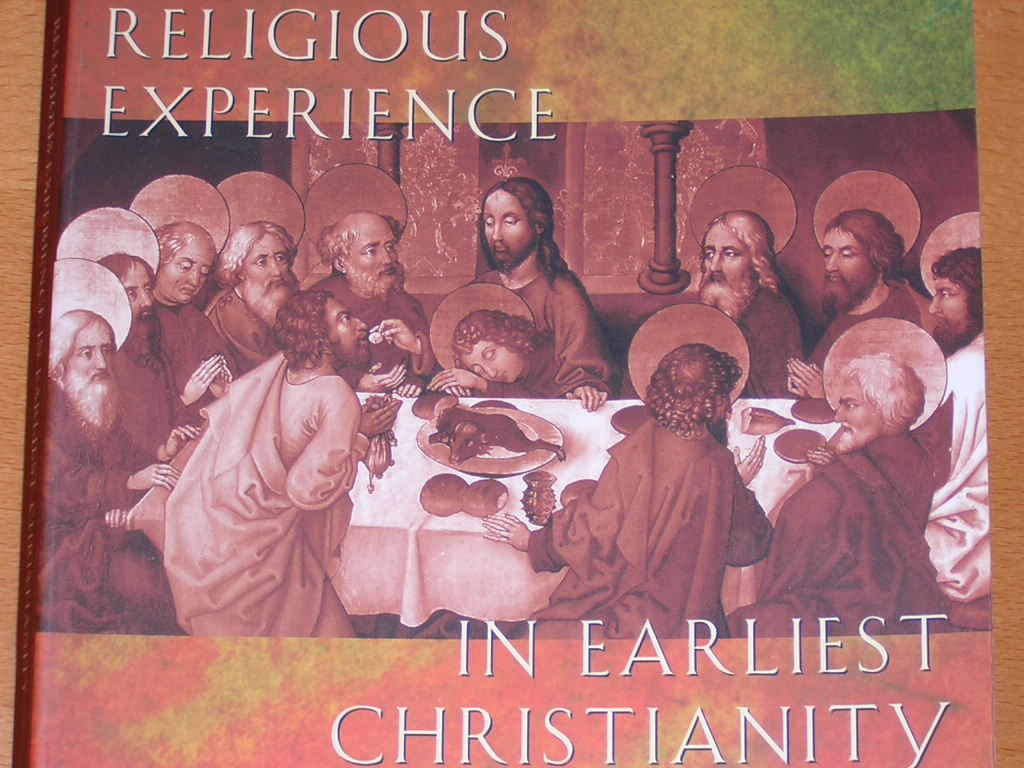
Zoom:
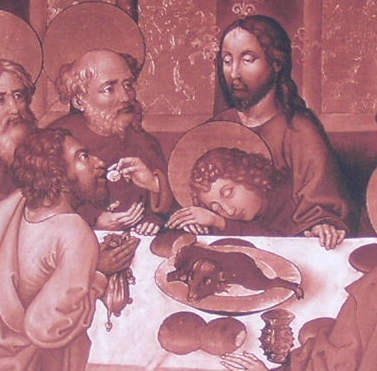
>Religious Experience in Earliest Christianity: A Missing Dimension in New Testament Study
>Luke Timothy Johnson
http://www.amazon.com/exec/obidos/ASIN/0800631293
>April 1998, rank 157K
>Review title: Religious Experiencing perspective on Christian origins
>Rating: 5/5
>A clear, concise, much-needed perspective on the beginnings of Christianity. Critiques the limitations of the Theology perspective and the Historical Sociopolitical perspective, and explains why scholars are averse to looking at the origins of Christianity from the point of view of religious experiencing.
>Central chapters cover glossalia and especially sacred meals, looking for the kind of experiencing that was common to the Mystery Religions and Jewish initiation. The convenient footnotes have valuable references to the books he praises and critiques. Ends with a call to start looking for religious experiencing as the main cause of Christianity.
>The cover has a good painting of Mary "John" Magdalene the Beloved Disciple, and Jesus feeding the Eucharist to Judas.
"Jesus feeding the Eucharist to Judas" -- correction:
Judas and Jesus share something in common in this painting: neither has a halo. Judas clasping the purse is praying with bent knee and looking up as Jesus. Jesus' finger and the piece of bread both are touching Judas' lips; Judas is kissing the piece of bread. Judas' head, like Mary/John's, is lower than Jesus'. The cup on the table is like a spiky hand-grenade; compare the "teeth" veil remnants on Amanita.
I could not determine the painter; the cover notes say La Cene [The Communion], Musee d'Unterlinden, Colmar, France. This cover reproduction is monochromatic orange-brown.
Jesus has a hand on the table, but Judas doesn't. Jesus' left arm is fully visible and has no folded cuff. The right hand administering Communion to Judas is disconnected visually by Mary/John's halo and has a folded cuff. Mary's left hand, arm, and folded cuff are visible; that hand rests on a right hand that is visually disconnected and has no sleeve or cuff visible. If the hand holding the bread is Jesus', then his left sleeve lacks a folded cuff while his right hand has a folded cuff. If the hand holding the bread is Mary's, then both of Mary's cuffs are folded.
The grey-haired balding man on Jesus' right (compare http://www.kfki.hu/~arthp/html/l/lorenzo/viterbo/madonna.html) has one hand on the table and this would probably be Peter (though arguably possibly James). We can expect it to be either James or Peter, because the main apostles are Peter, James, and John, and John (Mary) is already accounted for, the Most Beloved Disciple with head on Jesus' bosom. As always, the scene has Jesus plus 12 figures, one of whom is indicated as Judas.
Luke (short version that omits the "for you" vicarious atonement phrases): Then he took a cup, and after giving thanks he said, "Take this and divide it among yourselves. For I tell you that from now on I will not drink of the fruit of the vine until the kingdom of God comes." Then he took a loaf of bread, and when he had given thanks, he broke it and gave it to them saying, "This is my body. But see, the one who betrays me is with me, and his hand is on the table."
The painting makes Judas as holy as Jesus -- neither has a halo, though the Beloved Disciple Mary/John does. With respect to "the one who betrays me is with me and his hand is on the table", it implies Mary/John and Judas are innocent, while Peter (or whoever sits at his right hand) and other apostles are the betrayers.
I would like to know the painter and date, and a URL to see this painting clearly.
Related:
http://ramon_k_jusino.tripod.com/perugino.htm - Mary "John" Magdalene
http://www.magdalene.org/contents.htm
- Mary (with jar)
http://www.amazon.com/exec/obidos/ASIN/0892819979 - Amanita encoded in Christian art
http://www.entheomedia.org
- Amanita and Datura encoded in Christian art
Mark/lion halo with white dots on red edge
Announced April 22, 2002
Book: Authority and the Sacred: Aspects of the Christianisation of the Roman World
Peter Brown
http://www.amazon.com/exec/obidos/ASIN/0521595576
1995
Zoom showing just the cover art:
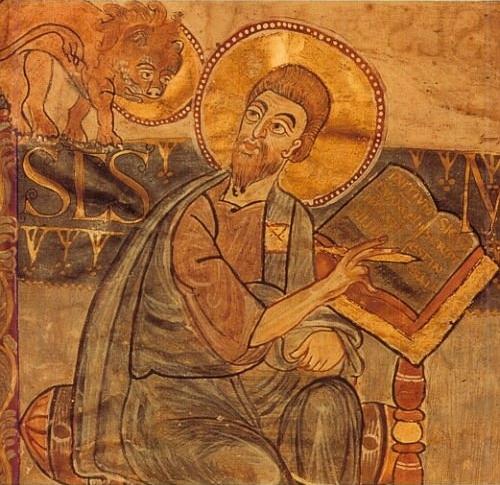
Check out the very distinct white dots against red background on this Amanita halo edge in this iconographic painting on the cover of this book. I think the Lion is Mark's symbol. This is the first time I've seen a lion with an Amanita halo.
Blessed Sacrament monstrance
Announced December 17, 2002
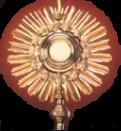
Image from the cover of:
Book: Visits to the Blessed Sacrament
Alphonsus Liguori
http://www.amazon.com/exec/obidos/ASIN/0895556677
2001
To isolate the Amanita cap, it would be good to use a circular crop tool on this picture. I don't know the origin of the red color in this image.
In Alan Watts' book Myth and Ritual in Christianity, page 198, he portrays such figures -- "Monstrance for benediction and exposition of the sacrament" -- as representing the spine and world-tree, with the heart of the sun, or the sun door, at the top. I'm continuing to build the case, or interpretive framework, that entheogens were much more prominent and widely used in Christendom.
-- Michael Hoffman
Egodeath.com
Home (theory of the ego death and rebirth experience)